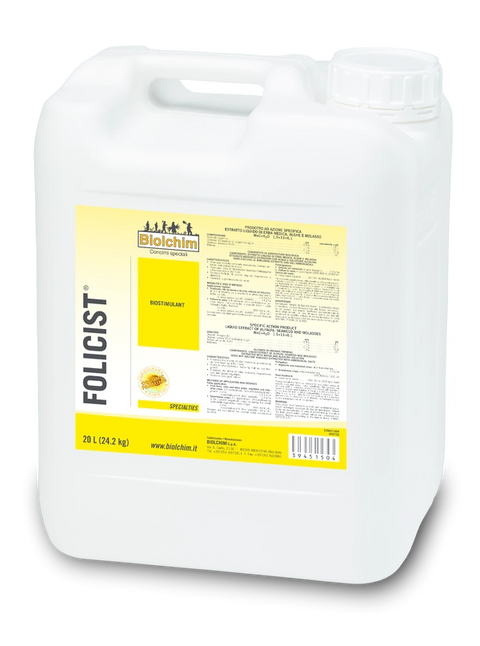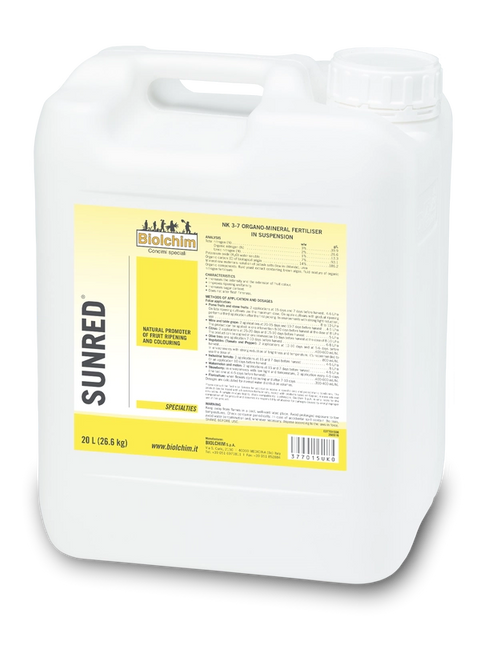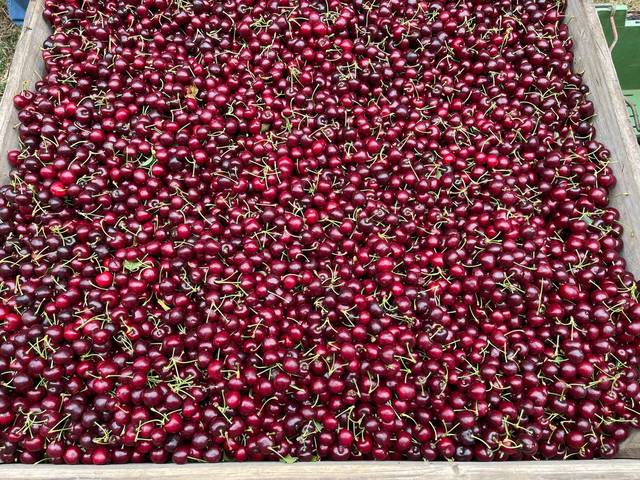
Lapin cherries - Cell division sprays for larger fruit in Southern Victoria, 2019
KRISS sprays during cell division significantly increased size and yield of Lapin cherries
Richard Hall, 24 December 2019
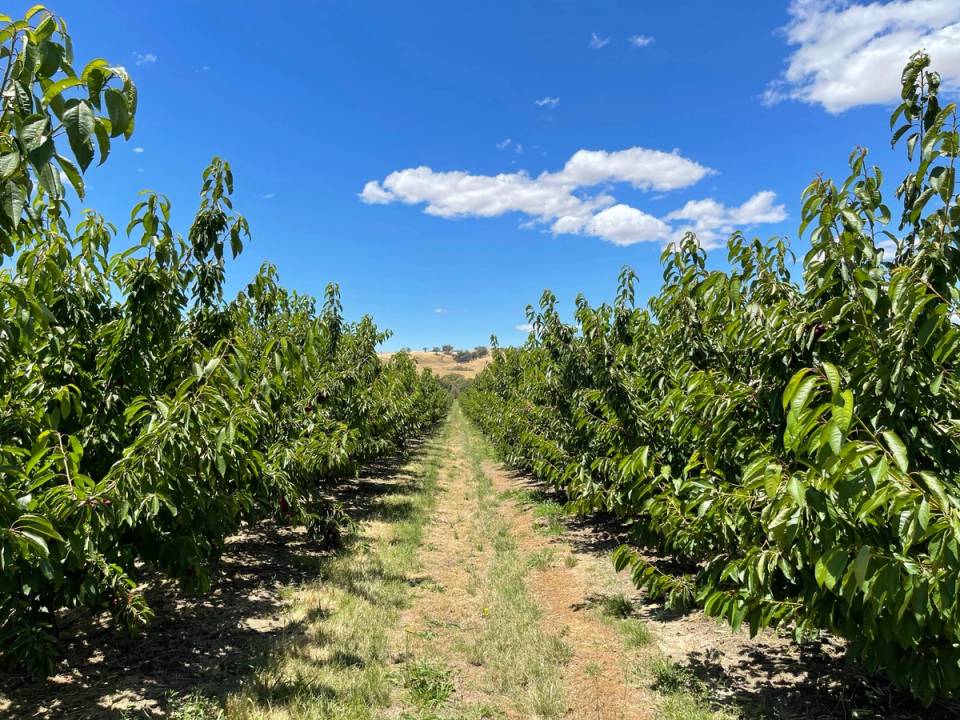
Summary
Two sprays of KRISS during cell division significantly (p<0.001) improved fruit diameter and yield of premium size Lapin cherries.
This case study combines results from 2 blocks in Southern Victoria at commercial harvest 24 December 2019.
It is recommended to include 2 sprays of KRISS and FOLICIST tank-mix during cell division per the Cherry Program.
For more information, to discuss specific blocks or place an order, contact Richard Hall 0413 182 763.
- +1.7mm average cherry diameter
- 2.6x premium size cherries (>28mm)
- +15% average cherry weight
Materials and Methods
Trial design and treatments
Trial design was determined and implemented by the grower.
Applications of KRISS were made with commercial equipment across a number of rows in the blocks. Other rows were left unsprayed.
These results are across 2 blocks in Southern Victoria harvested 24 December 2019.
Grower standard program
KRISS 2.5 L/ha
2 applications
5 day interval
FOLICIST was not included in the tank mix with KRISS in this instance.
Ideally FOLICIST would also be included per the BUD Biological Cherry Program.
Sampling
Sampling was conducted on the same day as commercial harvest commenced - 24 December 2019.
200 cherries were sampled in total (100 per treatment).
Cherry caliper measurements
The Feret diameter (widest point) of 200 cherries was measured using hand calipers.
Results and Discussion
Results - fruit diameter
- 2.6x premium size cherries (>28mm)
Per standard commercial practice, calipers were used to measure cherry diameter at the widest point. This is known as the Feret diameter.
Figure 1 shows the yield distribution of cherry diameter (fruit size) across the KRISS Treated and Standard cherries.
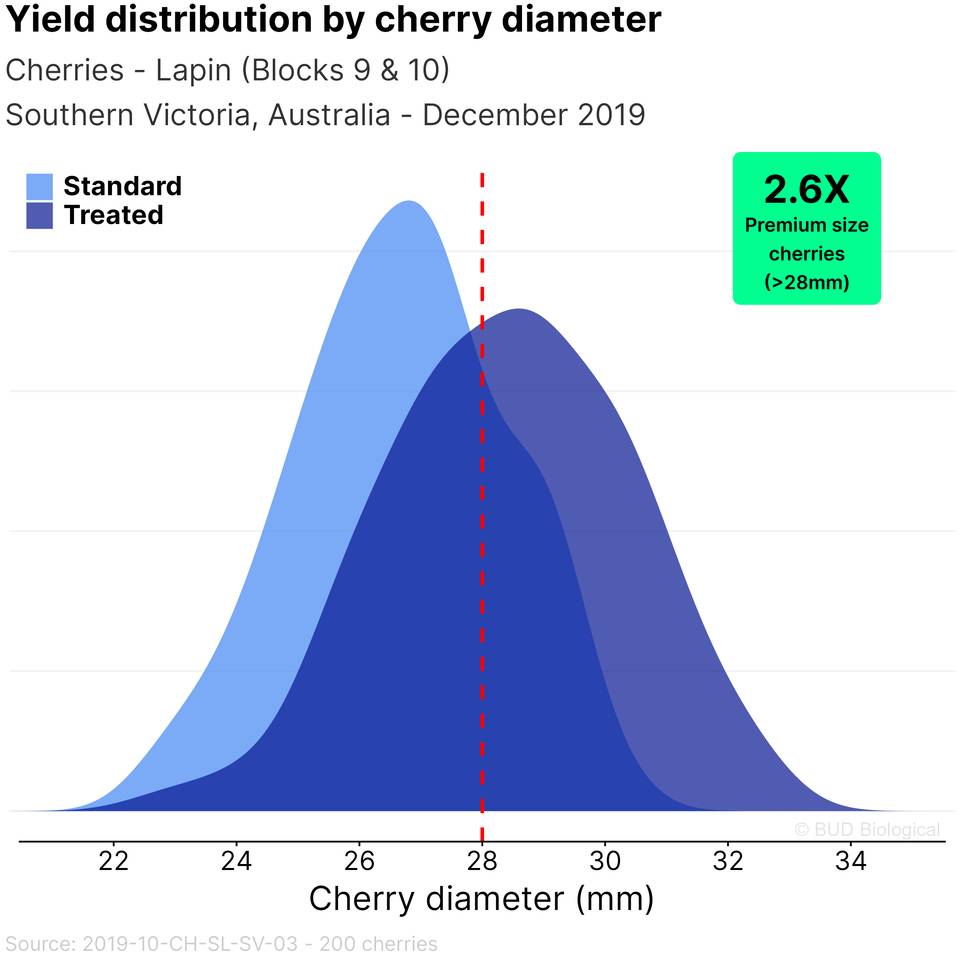
Figure 1: Yield distribution plots of cherry diameter (mm) at harvest as measured by calipers.
Influencing cell division and increasing the number of cells per cherry is the most effective and efficient way of producing significantly larger, firmer cherries come harvest.
KRISS is a valuable tool for increasing cell division at fruit set, setting up for larger firmer fruit at harvest.
In Figure 2 we see the same fruit graded into bins according to diameter.
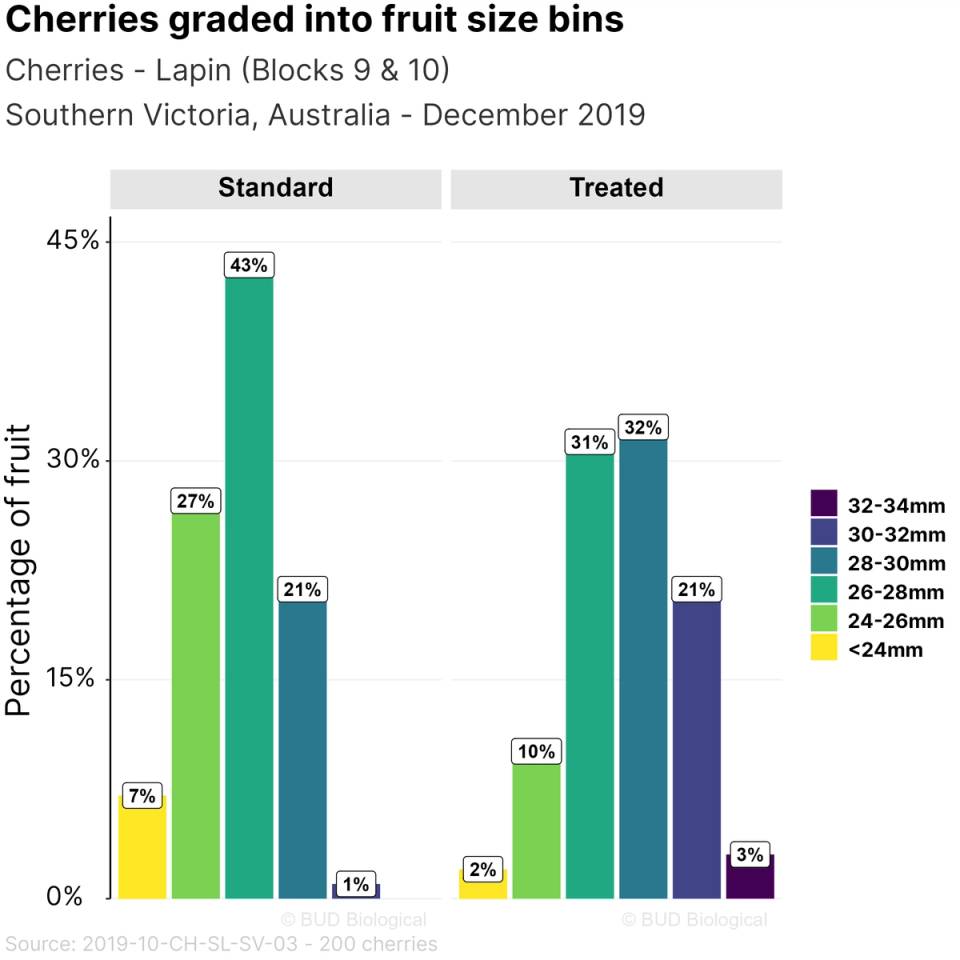
Figure 2: Percentage of fruit graded into bins according to cherry diameter (mm). Note larger fruit size resulting in more than 2.6x increased percentage of premium size cherries >28mm (57% Treated compared to 22% Standard).
In Figure 3 we simplify the number of bins based on premium size fruit as either above or below 28 mm.
Note the 2.6x increase in cherries larger than 28 mm.
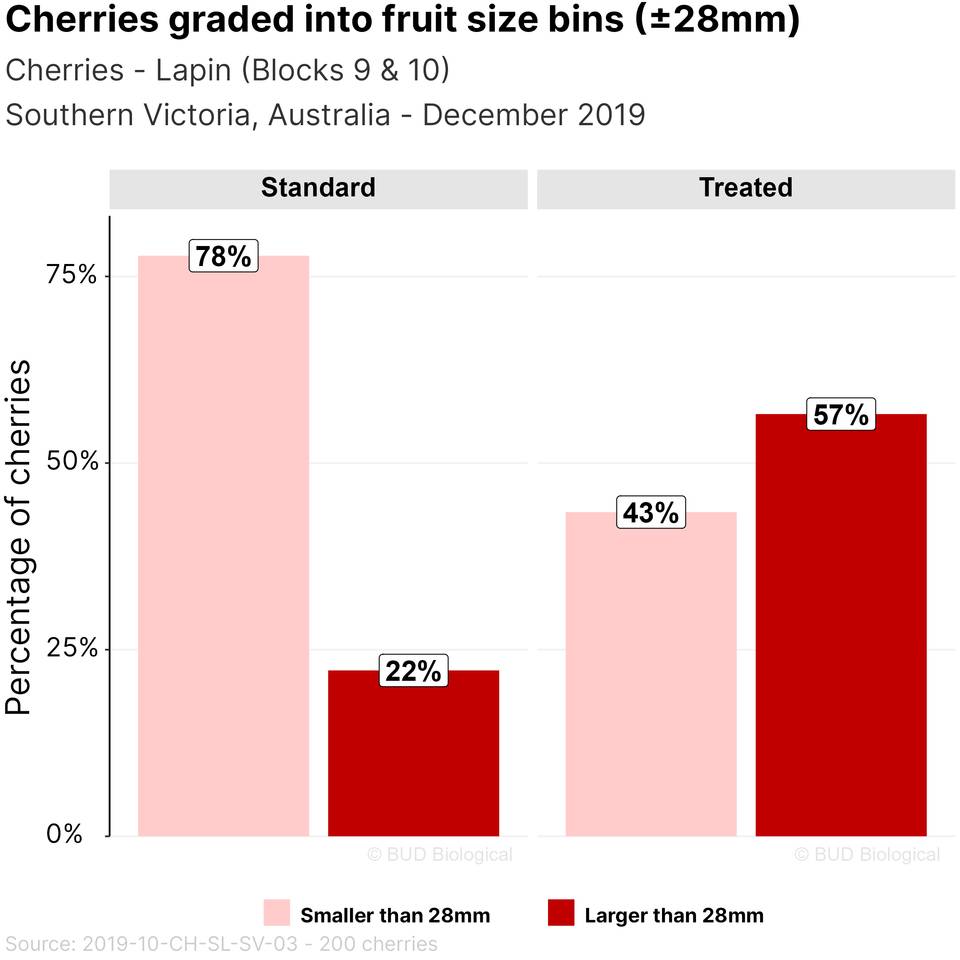
Figure 3: Percentage of fruit harvested graded into bins either above or below 28mm cherry diameter. Note improvement in fruit size resulting in 2.6x increased percentage of premium size cherries >28mm (57% Treated compared to 22% Standard).
Table 1 summarises the average (mean), standard deviation (SD) and statistics comparing Standard and Treated cherries.
Note KRISS Treated cherries were 1.7mm larger on average (+6.5%).

Table 1: Summary table showing KRISS Treated cherries averaged 28.35 mm Feret diameter being significantly larger (1.7 mm) than Standard cherries 26.63 mm. n = 2 blocks; 200 cherries, p<0.001
Individual cherries were not weighed for this study although average cherry weights were as follows:
Standard cherry weight on average 8.91 g
KRISS Treated cherry weight on average 10.29 g (+15%)
Conclusions
KRISS sprays are a valuable tool for increasing cell division and final fruit size.
With larger fruit comes significant yield and profitability gains.
It is recommended to include 2 sprays of a KRISS and FOLICIST tank-mix during cell division per the Cherry Program.
Acknowledgements
Thank you to the grower and managers involved for only spraying a part of these blocks and excellent communication during a particularly busy time of year.
Statistics
For those who are interested
Raw data from caliper measurements of 200 cherries. Note two outliers tagged were included in the tabulated data although removed from plots for simplicity. Including or excluding these outliers doesn't change the outcome.
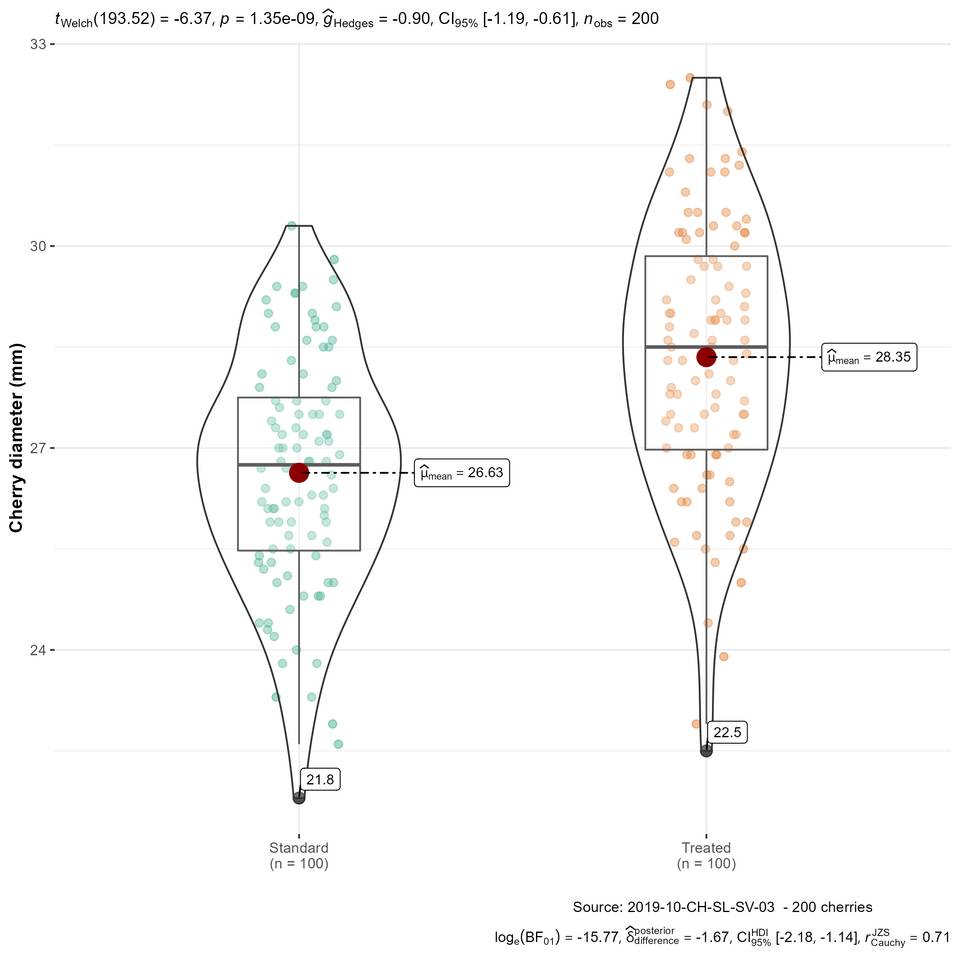
Figure 4: Statistical output from exploratory data analysis. Note outliers tagged, these don't change outcomes of analysis here.
Related Resources

